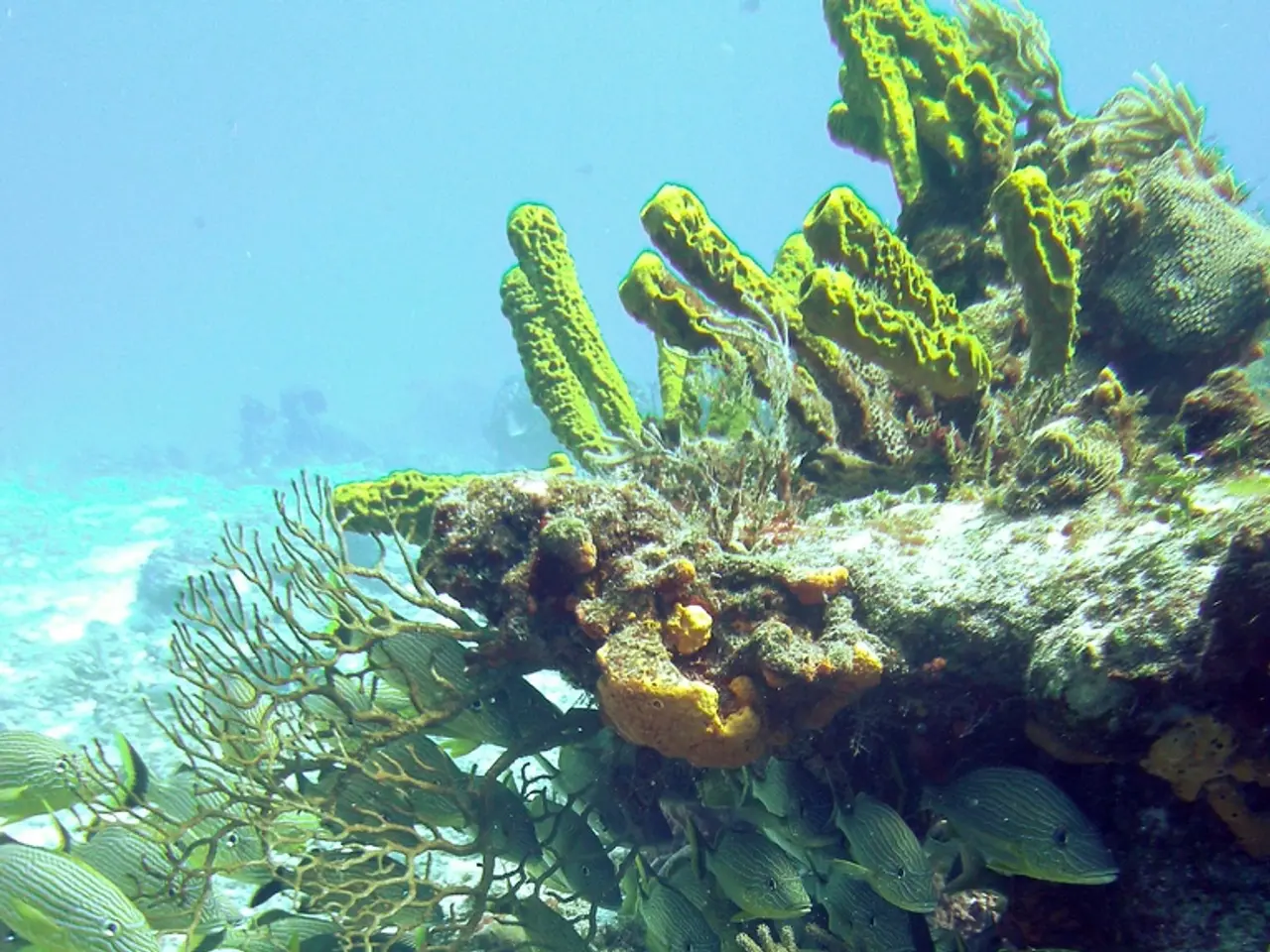Exploration Spotlight: Novel Acoustic Usage for Measuring Marine Life Abundance
In a groundbreaking study published in the journal Scientific Reports, researchers from the University of California San Diego, Bangor University, and the Centro para la Bioversidad Marina y la Conservación in La Paz, Mexico, have used hydroacoustics to assess the marine life within and outside of the Cabo Pulmo National Park.
The study, titled "Hydroacoustics as a tool to examine the effects of Marine Protected Areas and habitat type on marine fish communities," reveals that the abundance of fishes is significantly higher within the protected waters of the Cabo Pulmo National Park. The fish density, total biomass, and the size of individuals were found to be greater inside the MPA compared to waters outside.
Researchers performed transects, scanning the water column in rows using hydroacoustic equipment. This method, which generates information about marine resources inside MPAs in a faster and less expensive way, points the way toward a new, more cost-effective method of assessing fish populations.
The results of this study demonstrate that acoustic technologies can provide valuable insights into the health of marine ecosystems within MPAs. Although acoustic surveys can only approximate fish sizes and don't provide species-specific information, the researchers conclude that the hydroacoustic method could still be useful in gauging the benefits of MPAs.
Cabo Pulmo National Park, located in Mexico, has been identified as the most successful MPA in the world in terms of maintaining a sustainable fishery. The park has been the site of several studies by Scripps researchers since 2002. In 1995, local fishermen led the creation of a 71-square-kilometer (27-square-mile) undersea park to protect the waters they fished.
The study was part of an international team's research and was funded by the National Science Foundation, the Baja Coastal Institute, the International Community Foundation, David and Lucile Packard Foundation, and The Helmsley Charitable Trust.
Jack Egerton, the study lead author, states that using hydroacoustics to assess marine protected areas is novel and has shown the importance of the Cabo Pulmo National Park for fish populations. The study highlights the importance of habitat complexity and protection from fishing for fish populations.
The hydroacoustic method was used to image schools of fish and other marine life within the MPA. Surveys of coastal marine life are often performed through underwater visual censuses taken by scuba divers. However, the use of hydroacoustics offers a more efficient and cost-effective alternative.
The Cabo Pulmo National Park serves as a shining example of the success of MPAs in preserving marine ecosystems and supporting sustainable fisheries. The findings from this study further reinforce the importance of protecting these vital underwater habitats for the benefit of both marine life and human communities.
Read also:
- Peptide YY (PYY): Exploring its Role in Appetite Suppression, Intestinal Health, and Cognitive Links
- Toddler Health: Rotavirus Signs, Origins, and Potential Complications
- Digestive issues and heart discomfort: Root causes and associated health conditions
- House Infernos: Deadly Hazards Surpassing the Flames




